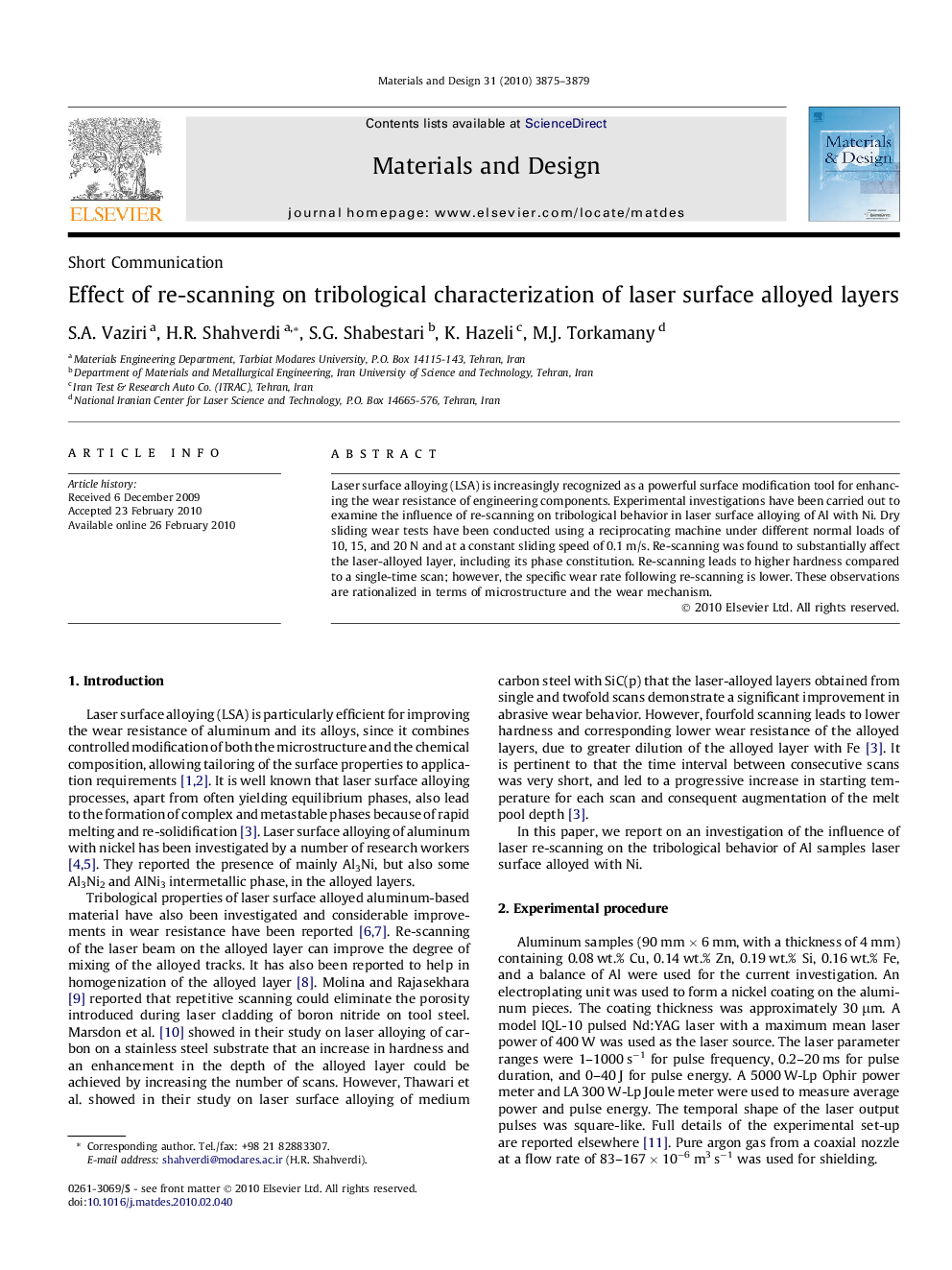| Article ID | Journal | Published Year | Pages | File Type |
|---|---|---|---|---|
| 831904 | Materials & Design (1980-2015) | 2010 | 5 Pages |
Laser surface alloying (LSA) is increasingly recognized as a powerful surface modification tool for enhancing the wear resistance of engineering components. Experimental investigations have been carried out to examine the influence of re-scanning on tribological behavior in laser surface alloying of Al with Ni. Dry sliding wear tests have been conducted using a reciprocating machine under different normal loads of 10, 15, and 20 N and at a constant sliding speed of 0.1 m/s. Re-scanning was found to substantially affect the laser-alloyed layer, including its phase constitution. Re-scanning leads to higher hardness compared to a single-time scan; however, the specific wear rate following re-scanning is lower. These observations are rationalized in terms of microstructure and the wear mechanism.
